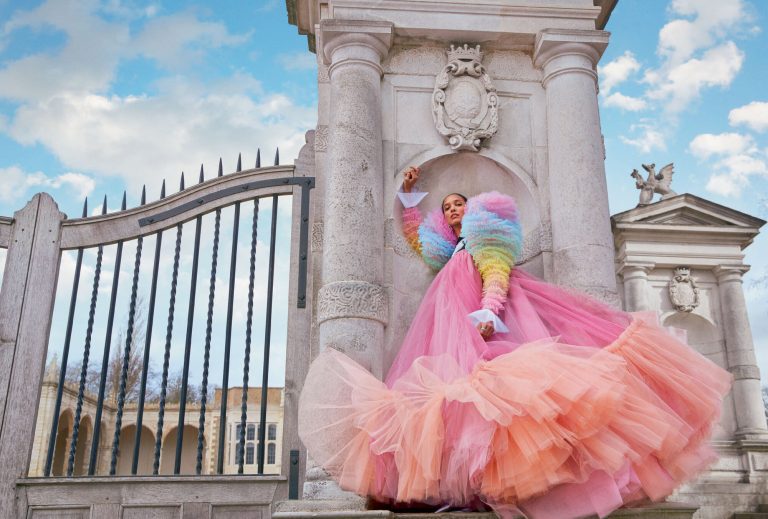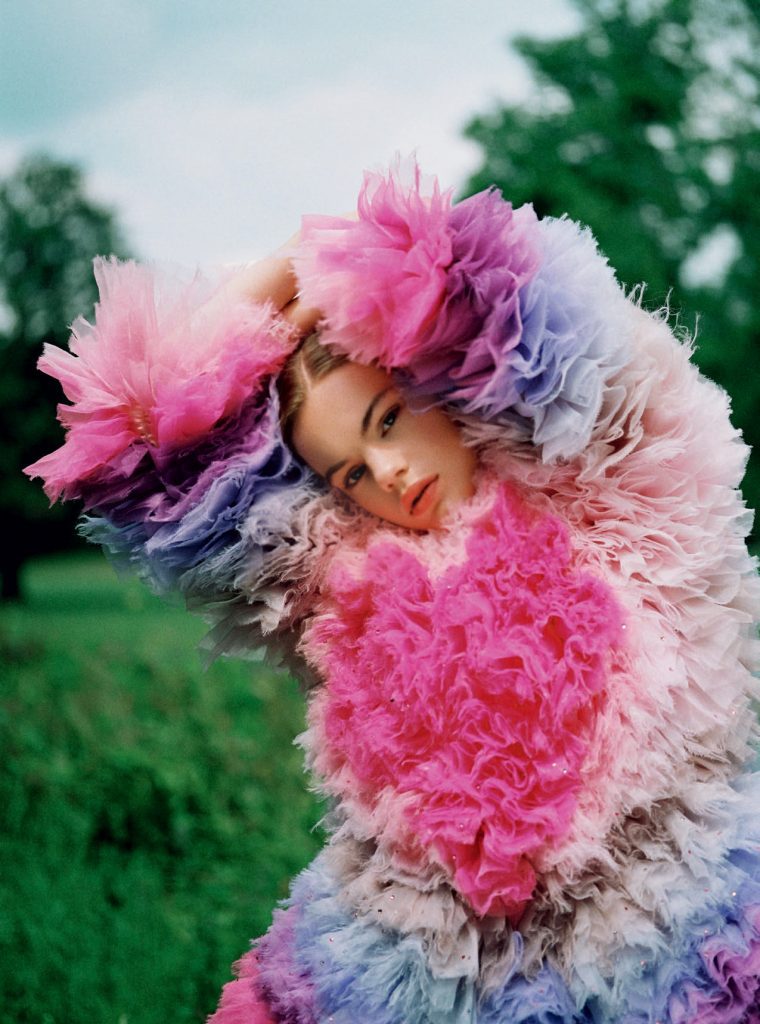
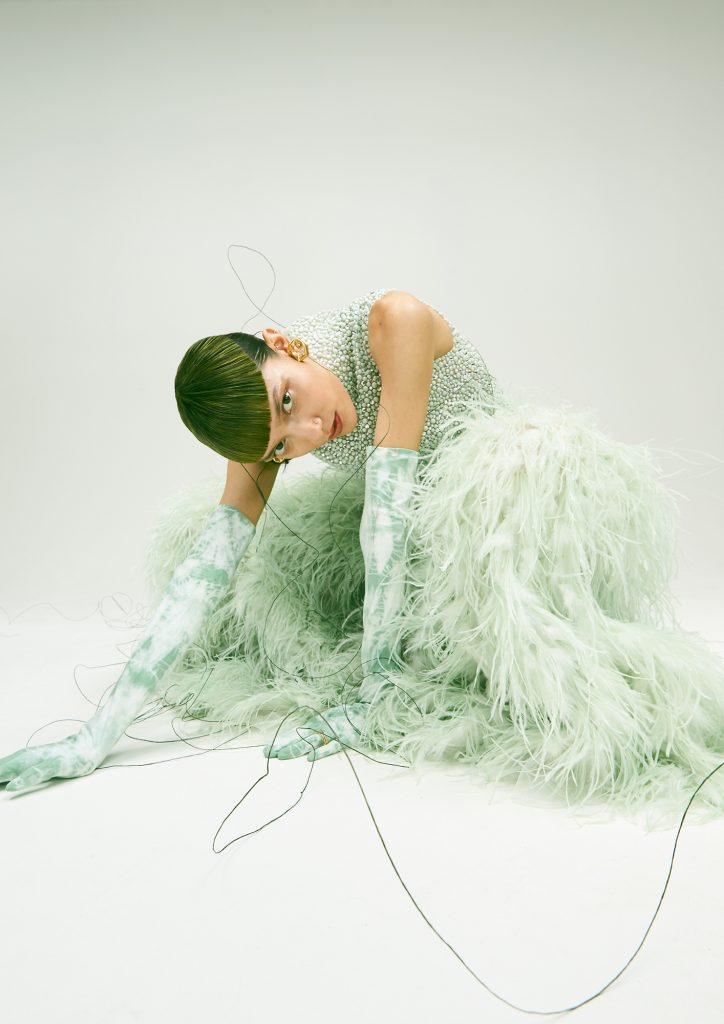

Ever wondered how that perfect outfit on your favourite fashion cover came to life? Enter Miranda Almond – fashion stylist, creative force, and the mastermind behind some of the most eye-catching editorial shoots in British Vogue and Harper’s Bazaar UK, who worked with such clients as Kate Winslet, Cate Blanchett, Lily James, Olivia Colman and Emily Blunt. Almond’s journey in fashion isn’t just about putting clothes on models; it’s about telling stories with style. Whether she’s mixing high fashion with unexpected streetwear or creating timeless, chic looks, Almond’s work doesn’t just follow trends – it sets them. Let’s dive into how she’s redefining the role of the stylist, one editorial spread at a time.
h: Your editorial work has a signature mix of sophistication and colour play. How do you strike the balance between classic elegance and bold, modern elements in your shoots?
Miranda Almond: I think on every level, whenever I’m styling – whether it’s for an editorial fashion shoot, a celebrity, or whatever I’m doing – you always have to put an element of yourself into it. You need to have a certain taste level, and even if it’s something you wouldn’t normally wear in daily life, in your mind, if you can imagine wearing it and liking it, that’s a good starting point. I always try to insert my taste into everything I do. With colours, I often get feedback that I’m good at combining them in interesting ways, and I think that comes from noticing things in everyday life. Nature, for example, is one of the biggest inspirations for me in terms of colour combinations. You just have to keep your mind and eyes open at all times to absorb all of that. Culture, cinema, music, and street style also offer so much inspiration. I don’t think we ever run out of ideas – it’s all about staying open to it.
h: You’ve worked with some of the biggest names in fashion photography – like Alexi Lubomirski and Patrick Demarchelier. How do you collaborate with photographers to bring your creative vision to life on set?
MA: It’s always a collaboration. Depending on the photographer, the level of involvement varies. Some want to be part of every step, while others prefer you to come up with a more finished idea – a model, location, and references. But even then, it’s still collaborative because your ideas might spark something new in them, and suddenly you’ve evolved the concept together. That’s the exciting part, really – starting with an idea and watching it grow and improve through discussion. Of course, it’s not just the photographer; the whole team – hair, makeup, and the model – are all essential. If one part isn’t working, it can really impact the shoot. I’m lucky to work with incredible makeup artists, hairdressers, and models. It’s a collaborative effort where you have to bring the right energy and guide the team to make the best images possible.
h: Having styled for magazines like Harper’s Bazaar and Vogue, what do you think makes a truly iconic fashion editorial? Is there a specific shoot that stands out for you?
MA: There are just so many! Growing up, I was hugely inspired by Grace Coddington – her shoots were always over and above everyone else’s. The attention to detail, referencing, the storytelling – it was just incredible. When I was at British Vogue, I worked with Kate Phelan, and she had such an inspiring style as well. Everything she did was spot-on, and she always infused her work with her taste, which I admired. It’s hard to name specific shoots because there are too many, but now, with everything online and accessible, I’m constantly inspired by independent magazines and photographers I might not have seen otherwise. Tim Walker is another favourite – his shoots are pure fantasy, filled with imagination and wild sets. I also love the Financial Times magazine How to Spend It; it’s very much in line with my aesthetic. And Harper’s Bazaar, which constantly produces beautiful and timeless fashion shoots, is always an adventure. We shoot on location a lot, and it’s always exciting to find new spots that perfectly fit the narrative. It’s a mix, really, of so many influences.
h: Fashion is constantly evolving. How do you keep your finger on the pulse of trends while ensuring your styling remains timeless and true to your aesthetic?
MA: It’s about constantly referencing yourself and asking, ‘Would I wear that? Do I like it?’ You have to like it, or even love it, to style it in a way that feels authentic. I immerse myself in everything, and with how accessible inspiration is now, it’s easier than ever. I’m always looking, always exploring, and I don’t just stick to what I’m used to. Pinterest is one of my favourite tools for creating mood boards – I’m constantly on there, finding inspiration from all over the world, not just fashion stories but street style and photography in general. Street style, especially from the younger generation, is a huge inspiration. I’m lucky enough to have teenagers, so that helps keep me on my toes!
h: You’re a fan of preloved fashion and sustainability. How do you incorporate sustainability into your work as a stylist without compromising on creativity or luxury?
MA: That’s an ongoing challenge. I’ve committed to buying pre-loved, and it’s going well. I’m very inspired by my daughter, who’s brilliant at finding amazing pieces for great prices on pre-loved sites. It’s such an interesting way to dress – more eclectic, more expressive, and not just about following trends. But in terms of using pre-loved pieces for my work as a stylist, it’s still tricky. Borrowing pre-loved clothing for shoots isn’t quite mainstream yet. When I’m styling an editorial, I’m often working with one collection, so it feels somewhat sustainable because it’s not mass-produced. But I’m aware that we’re still fueling an industry that’s a major polluter. The revolution has started, but we’re not there yet. I hope that as sustainability becomes more accepted, it will get easier to incorporate into my work. Celebrities re-wearing designs from the past is a great trend on the red carpet, and the more that happens, the more we can move towards valuing vintage and pre-loved pieces.
h: You’ve styled celebrities for high-profile red carpets. How does dressing a star for an event differ from styling for an editorial shoot? Do you approach it with a different mindset?
MA: It’s a different approach. On the red carpet, a celebrity is seen from every angle, and they have to wear the outfit for the entire evening, so comfort is key. With editorial, a lot is going on behind the scenes – you can pin, clip, and adjust to make the shot perfect. The model only has to wear it for a short time, so you can take more creative risks. For a red carpet, it’s about making sure the outfit is perfectly tailored and elevates the talent to look their best, especially for the all-important red carpet photograph. On a shoot, you can create characters and tell stories with accessories, props, lighting and the location, but on the red carpet, it’s just them-it’s their moment.
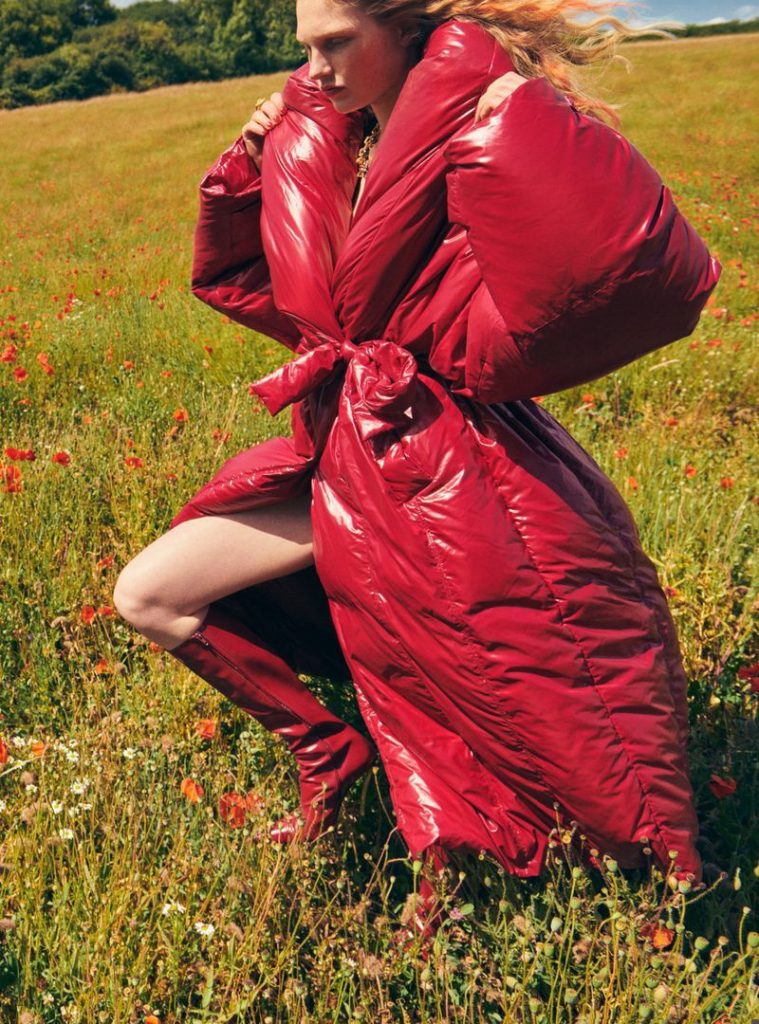
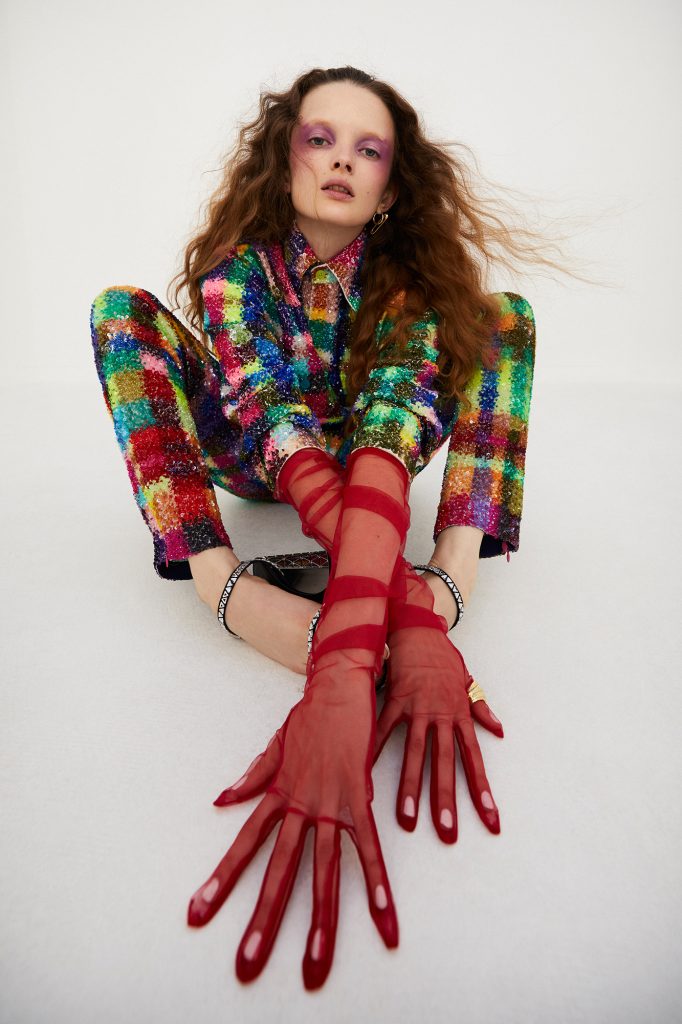
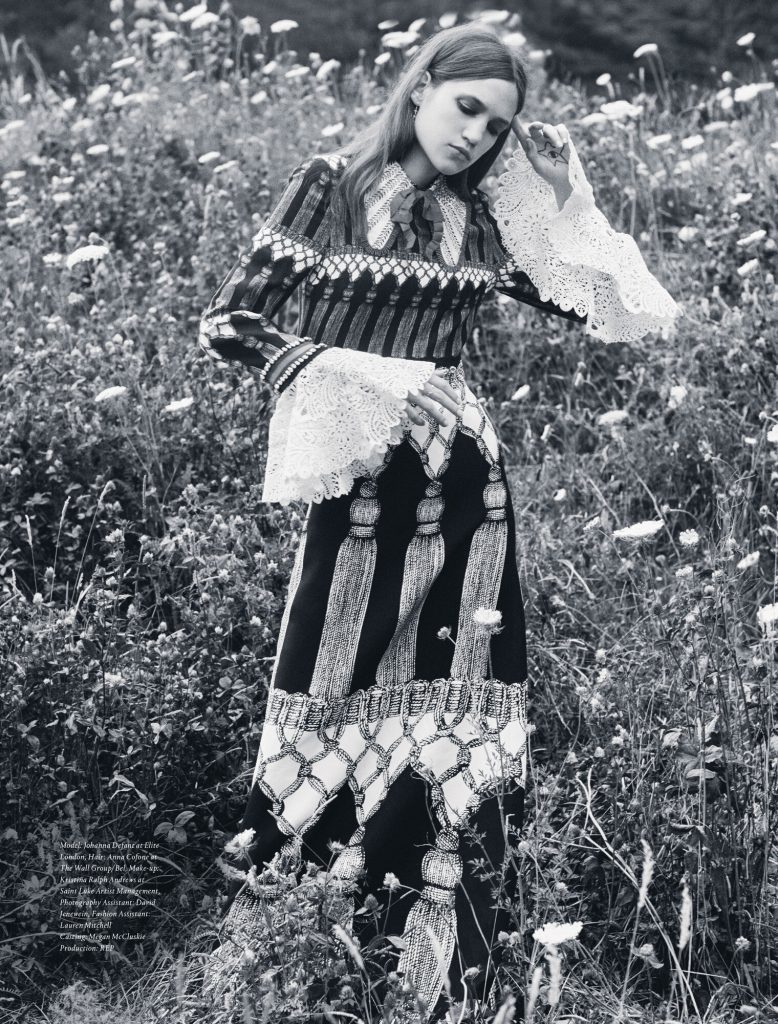
Photography courtesy of MIRANDA ALMOND
